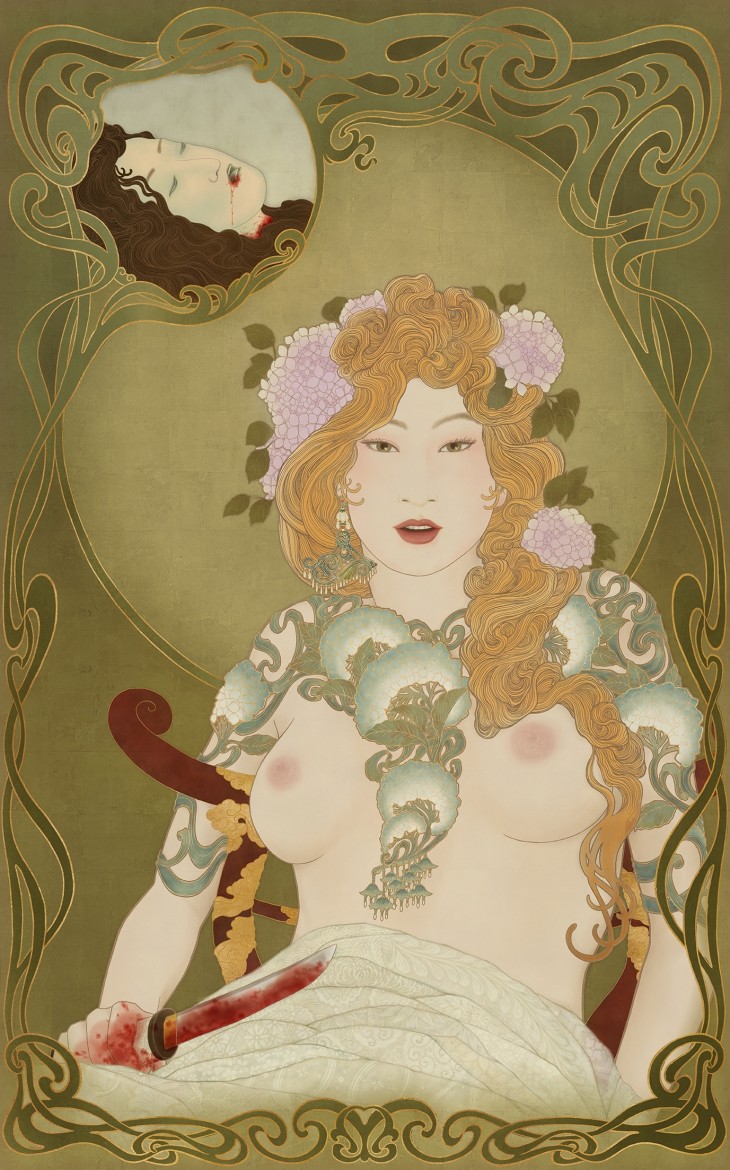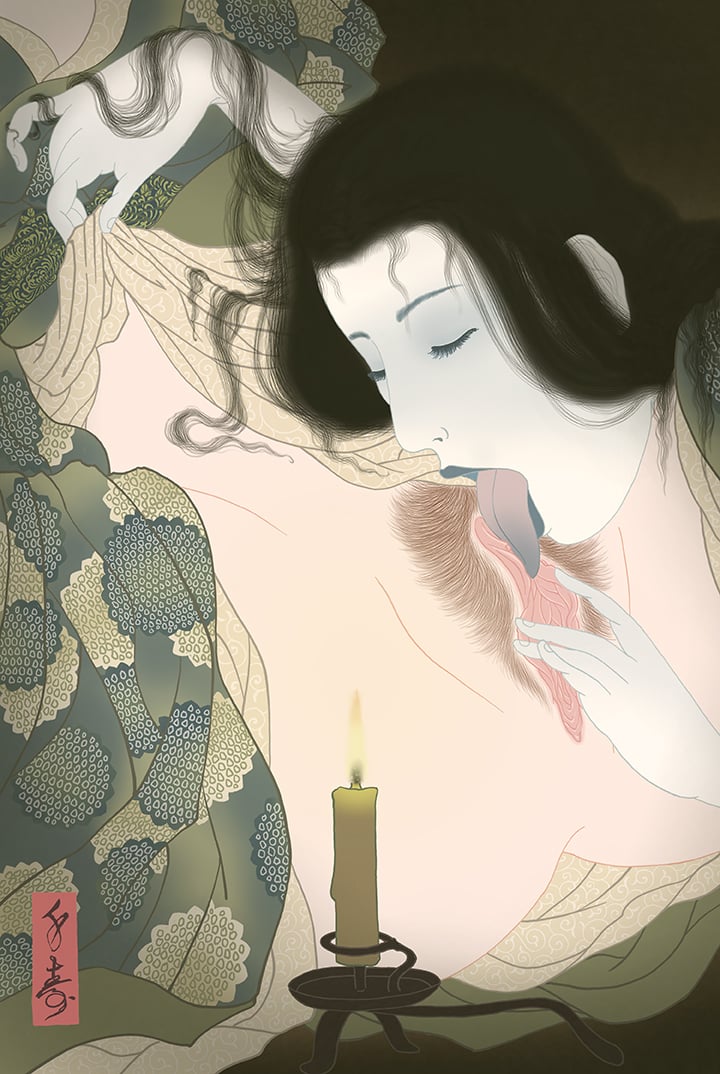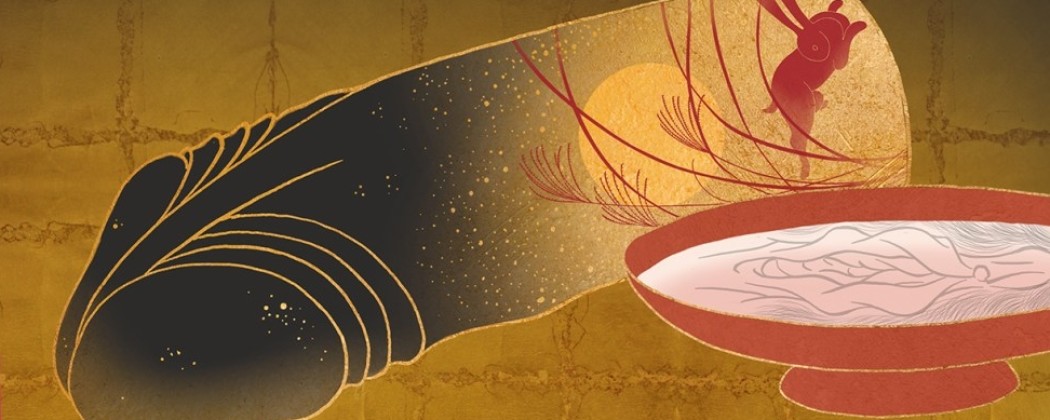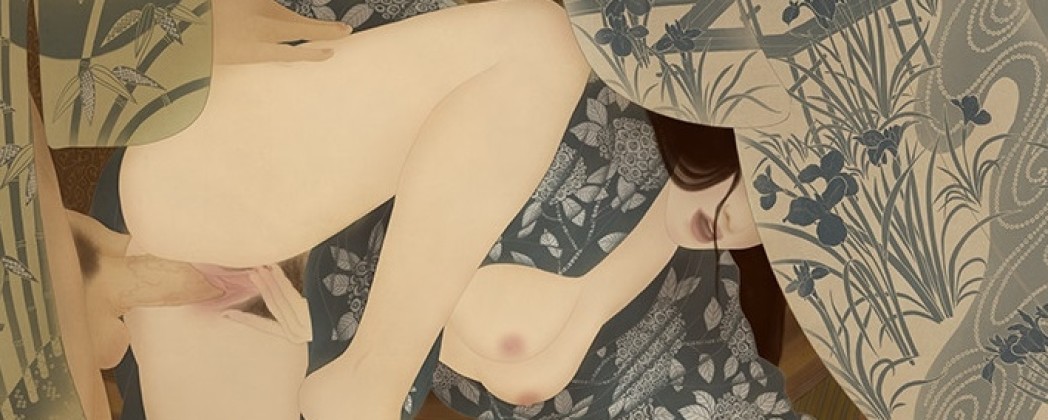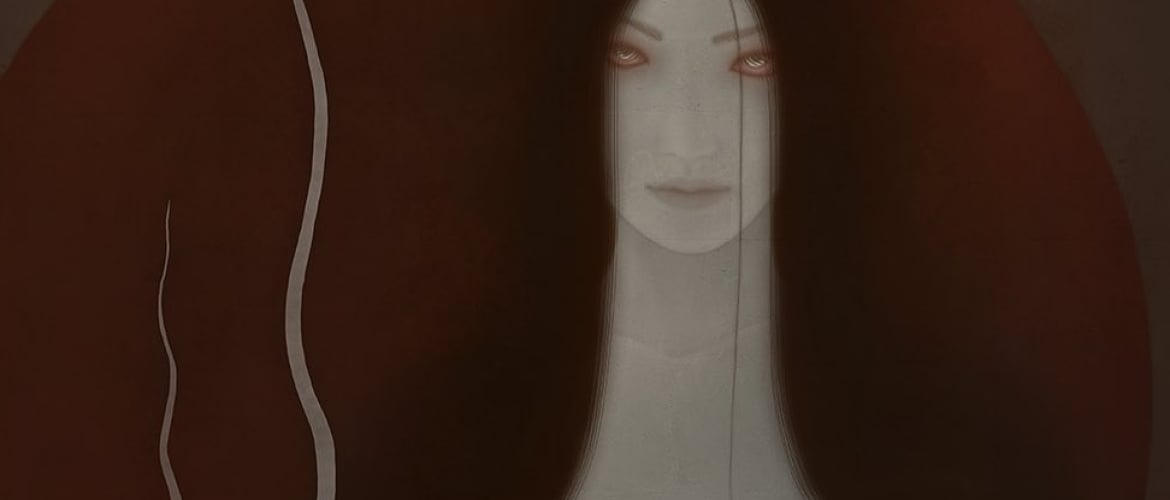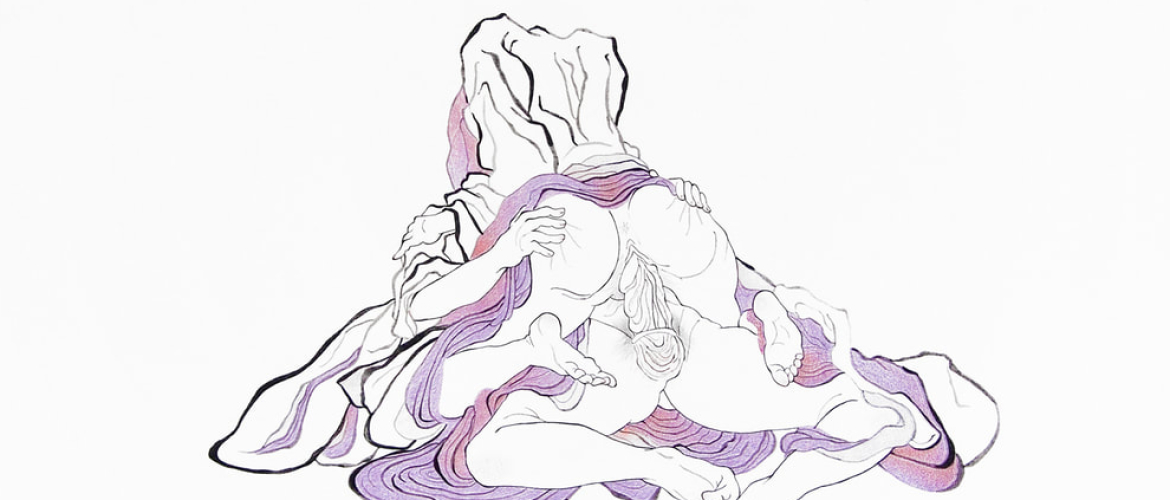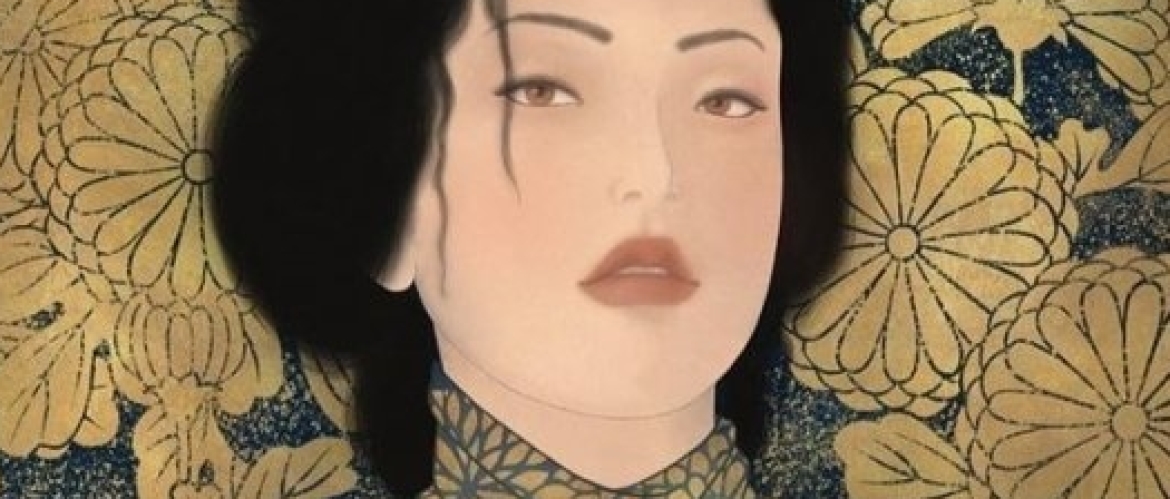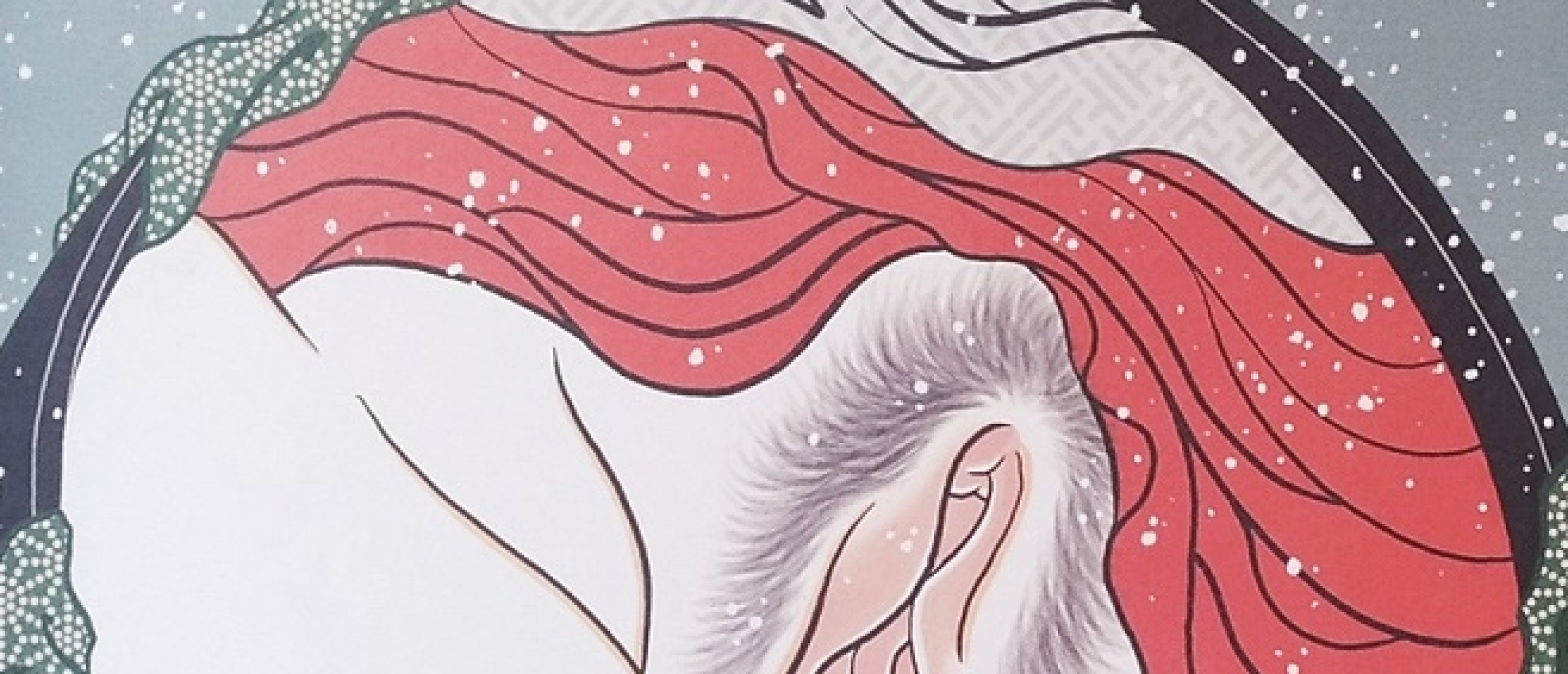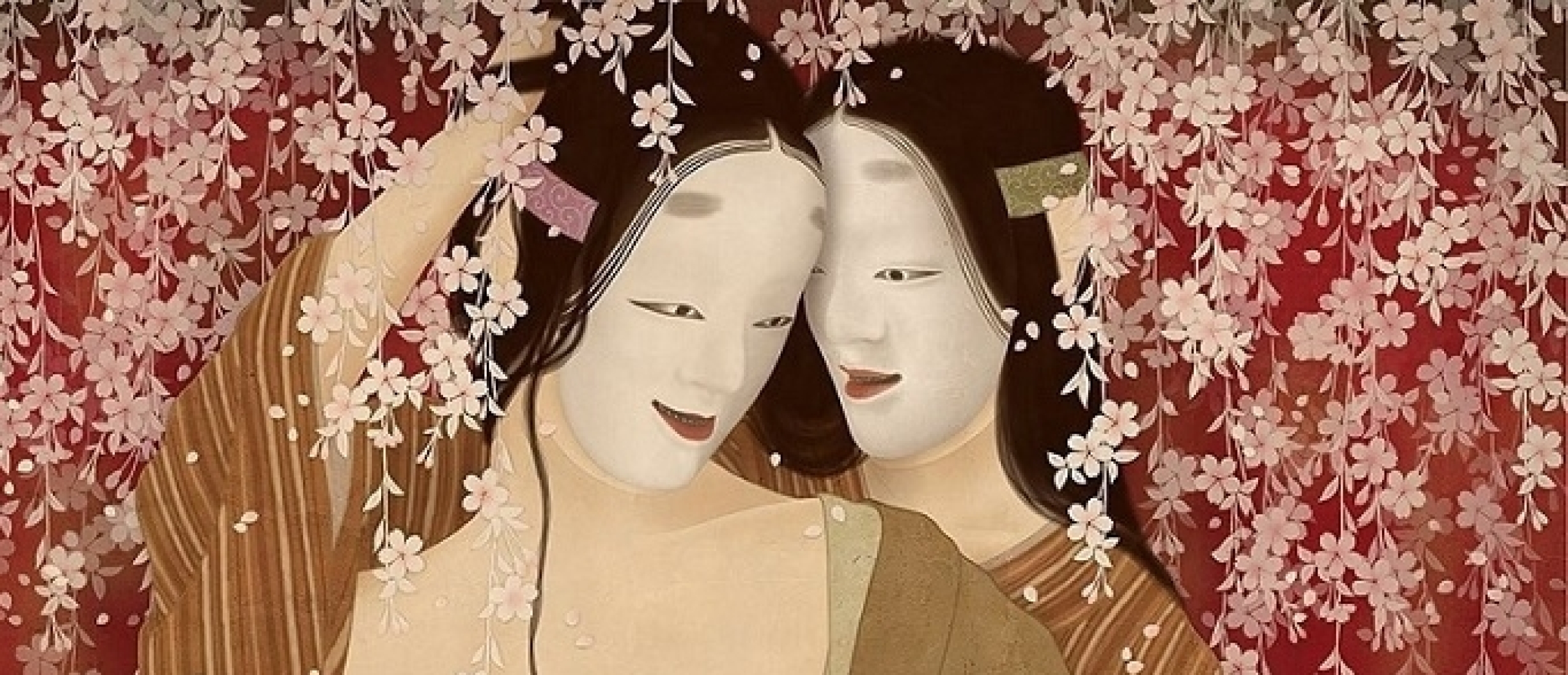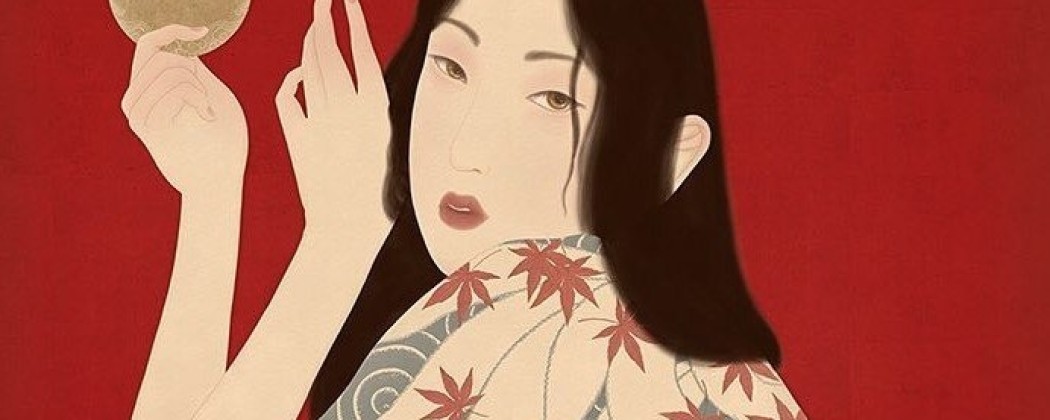
Welcome back! In this second part (first part here) of the interview Senju goes into more detail on the production process of his work, his deep love for Japonism, the aesthetics of contemporary shunga, future projects and why doesn’t he have a good word to say about Donald Trump?
5) One of your fans would like to know more about the production aspects of your work. How are they printed? He has already more than 20 of your paintings, and has them all filed away, because he doesn’t dare having them exposed to light for fear of them fading.
I reproduce my work using high end professional inkjet printers from Epson. Their inks are archival safe and made to last for a long time. The paper matters as well and I use brands that I trust for their reproductive and archival qualities. It is a part of the Two Cranes Gallery idea that we are always investing back into our printers and other equipment. Next year we have our eyes set on investing in a professional large format printer from Epson that would allow us to make prints up to 1×3 meters!

‘Youko (fox spirit)‘ (September 2020)
I am always thinking about ways to make what I do more valuable to the buyer. An important part of that is to not let any part of the process out of sight. I prefer to do it myself so that it truly is my work from the first vision to the packed and labelled package that I personally drop off at the post office. This is of course extremely time consuming but the feeling of satisfaction more makes up that. I think as long as my prints are not hung or displayed in direct sunlight they will hold up well over time. Nowadays there are also framing glass available that helps protect work from UV rays etc. In a way I like that this particular wonderful fan that invested in so many of my pieces keeps them i file. That is the way the people of old Edo usually kept their collections of Woodblock prints, taking them out occasionally to enjoy them or show them to others. That is also a part of why so many prints look pristine to this very day. Then again, the idea of my work decorating someones home is absolutely exhilarating!
6) Your recent work seem more inspired by Western art (Art Nouveau), Millais’ Ophelia, kinbaku and are less explicit like your earlier “shunga” work. Is shunga becoming more in the background?
It is all about my evolution as an artist. The pieces where I address western art that has meant a lot to me are a way to connect the dots both culturally and artistically. If one studies Japanese art for a long time one inevitably ends up looking at the phenomena of Japonism. This was an incredible time in history when Japanese art profoundly changed western art and gave birth to Impressionism and Art Nouveau among other lovely things.
The influence of Hokusai, Hiroshige and Yoshitoshi on what is now regarded as western art and design cannot be overstated! The various metamorphosis this time and movement gave rise to, are so abundant and it is a personal pleasure of mine to keep track of them. From paintings, fabric patterns, wall papers, architecture to contemporary Danish and Finnish furniture design! It is everywhere! Look at Tintin as an example. Hergé fell in love with Ukiyo-e and Tintin is what came out of it. His work later came to influence countless other artists and the chain continues unbroken. It is all so obvious when you start looking at it with open eyes.
I also try to keep in mind the idea of what Shunga would be if the art form had never stopped to be produced. If you compare the first more crude and simple looking forms of Shunga by for example Hishikawa Morunobu to the works of Kitagawa Utamaro and Katsuchika Hokusai you see a clear and obvious refinement in both technique but also in subject matter and how the act of sex is portrayed. If you travel even further in time, all the way to the Meiji period, it becomes even more refined, as in the works of Tomioka Eisen.
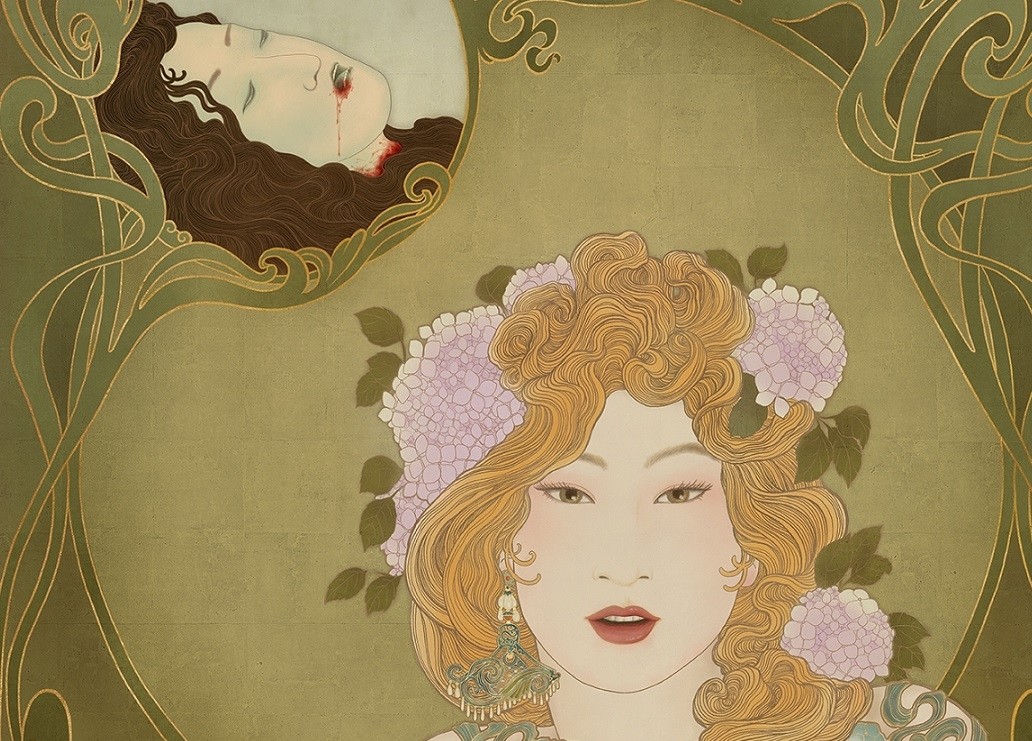
It is a vital part of Japanese culture, especially in the realm of arts and crafts, to first emulate and copy your teacher until your version of their work is almost identical. This is the learning phase. Then comes the phase where you, in a sense of the word, tear this down in order to let your true personal self to come out. This is how traditions stay alive. Not by being kept in bonds and chains but rather through constant development and evolution. It is however very important to thoroughly learn the tradition that you are later going to add your mark to.
Right now I feel that I am in a sort of transitional phase where a huge amount of ideas and concepts for the evolution of Shunga are spinning around in my head. It will be very interesting to see where it all ends up. A very important part of making erotic art versus producing simple pornography, is that I feel you have to take into account the viewers imagination and emotions.
We now live in a time where pornography is abundant to the level of being completely worthless as stimulation for the sensitive and awake mind. So perhaps at the moment being less explicit but at the same time trying to show the same thing, or to tap into the viewers emotions more, is the way to go. After all, Shunga was a direct answer to a lack of pornography so maybe the future of contemporary Shunga at the moment is to answer to an abundance of pornography instead?
The Shunga of the Edo period was unique in that it showed sex between consenting adults, often in normal social constellations like husband and wife, and that is was liberated from much of the violence, male domination and toxic masculinity that so often plagues pornography today.
To properly understand and view Shunga takes quite some knowledge about the social culture of Japan during the time it was produced. One inevitably has to ask oneself questions like ”how much has abrahamic religions colored our view and experience of sex and gender roles?” or ”is there such a thing as normalcy?”. Beyond the pure artistic content of Ed period Shunga there is so much more.
Of course there are situations and settings that still has to be showed in an explicit way, but I feel that flexibility is vital for contemporary Shunga to thrive. I love creating really explicit scenes and will continue to do so.
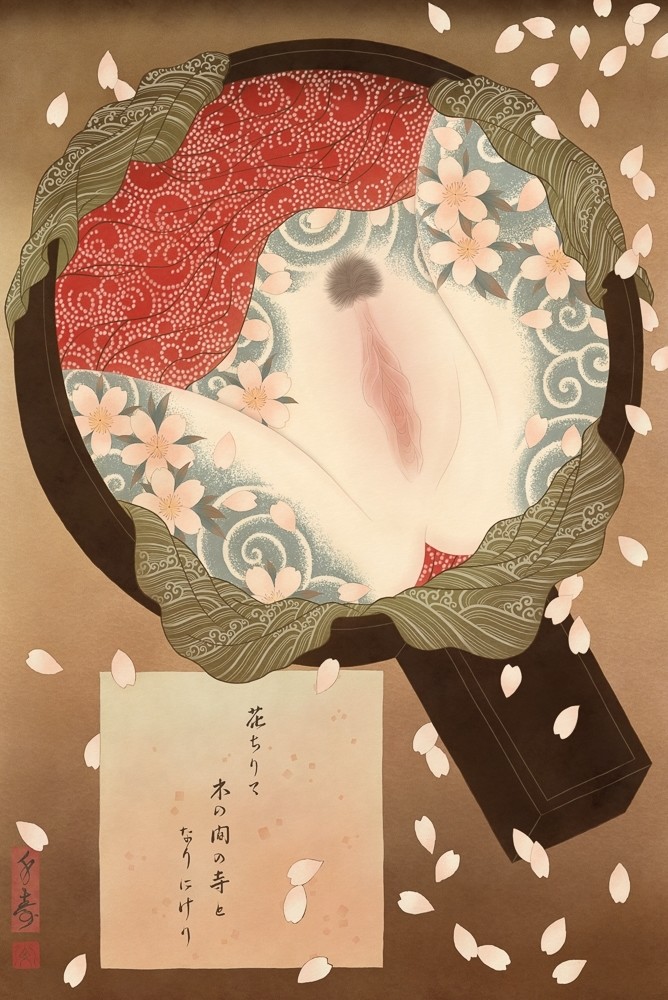
‘Haru (Springtime)‘ (Oct 2019)
7) What are your upcoming projects?
Despite there being a pandemic ravaging the world, I remain optimistic about the future. In just a few days I will start working on a new book featuring my work from 2018 until now. This time it will first be released as an e-book available from Amazon Kindle. I love physical books but they are also costly to produce and expensive to ship around the world. Just like the Ukiyo-e artists of the Edo period it is my wish to be available as much as possible to ordinary people. An e-book doesn’t require physical shipping and I can keep the price low enough for fans from countries who doesn’t have the same type of economy as we do in the EU. I hope to release the book before Christmas this year.
I have so far about 3-4 group exhibitions that I will take part in this spring, mostly in the US. An overwhelming part of my fan base is from the US so it will be really exiting to show my work there. Unfortunately I cannot be present in person due to the pandemic. And even though that situation would be resolved there is still the question if the astronomical asshole Donald Trump would still be president. I have sworn not to set my foot the US as long as he is president. I cannot explain thoroughly enough the distaste I have for his person and the kind of hate and division this incredibly unintelligent man has spread across our world. I will hopefully dance on his political grave after the US presidential elections.
Furthermore, I will work hard to arrange so that I can have my first solo exhibition and I would love for that to take place in Japan. After all, that is what feels like home to me since so many years now, and the energy and inspiration gathered from such an event would be tremendously important to me. Meanwhile I will continue to paint as much as I possibly can. The social distancing during the pandemic really allows for space and time to paint.
Oh, and I hope to start painting my renditions of famous Shunga from the Edo period. I intend to just apply a slight touch of what I now have as a skill set as a painter. It will be an ongoing homage to those that came before me and provided a starting point for my own career as an artist.
Thank you so much for once again providing me with interesting questions!
Sincerely,
Senju
Thank you Senju for your fascinating and extensive replies!
You can check out a great collection of Senju’s prints on his own site….!!!
Another version of the ‘Judit‘ piece Senju made earlier can be found on the following page (second picture)..!!
Let us know your thoughts on the interview in the comment box below…!!

